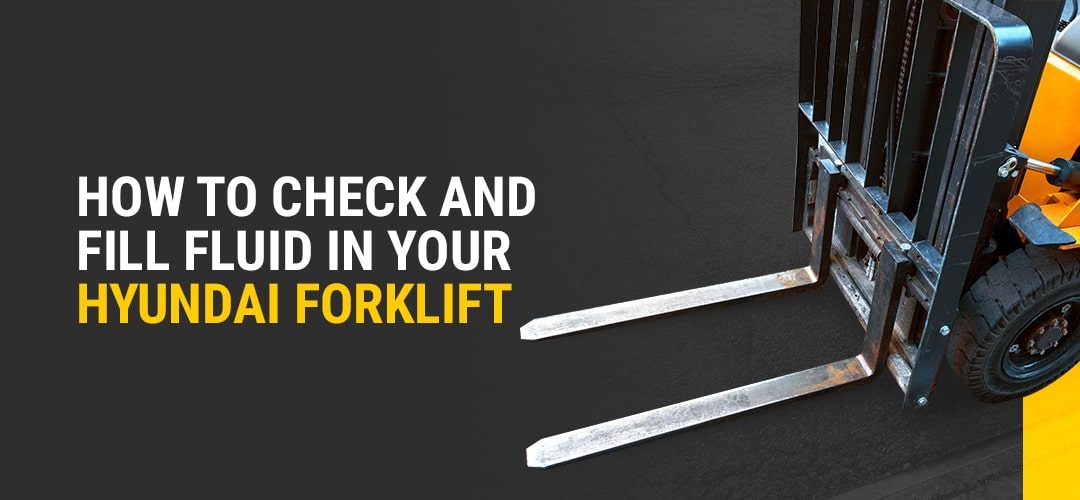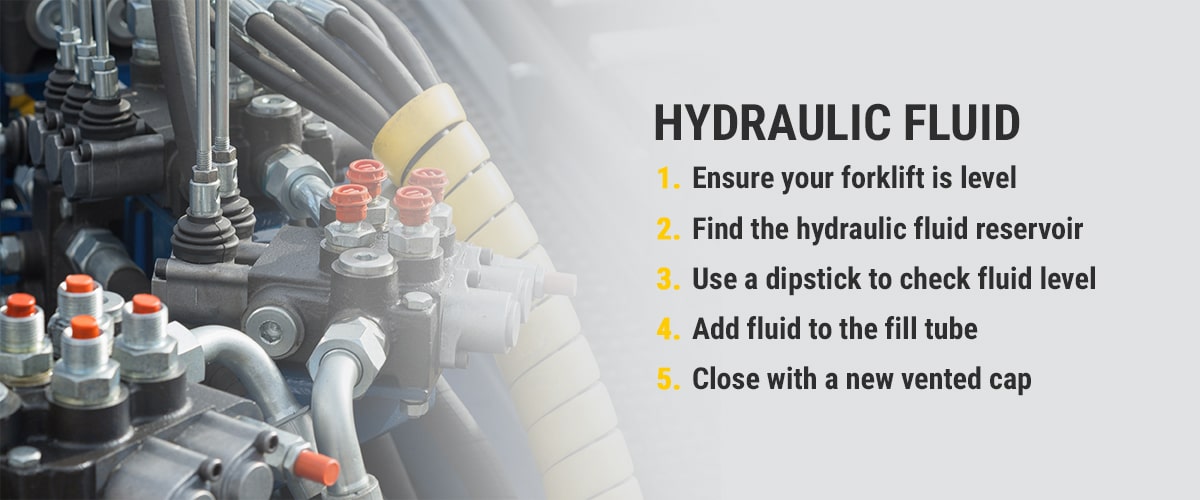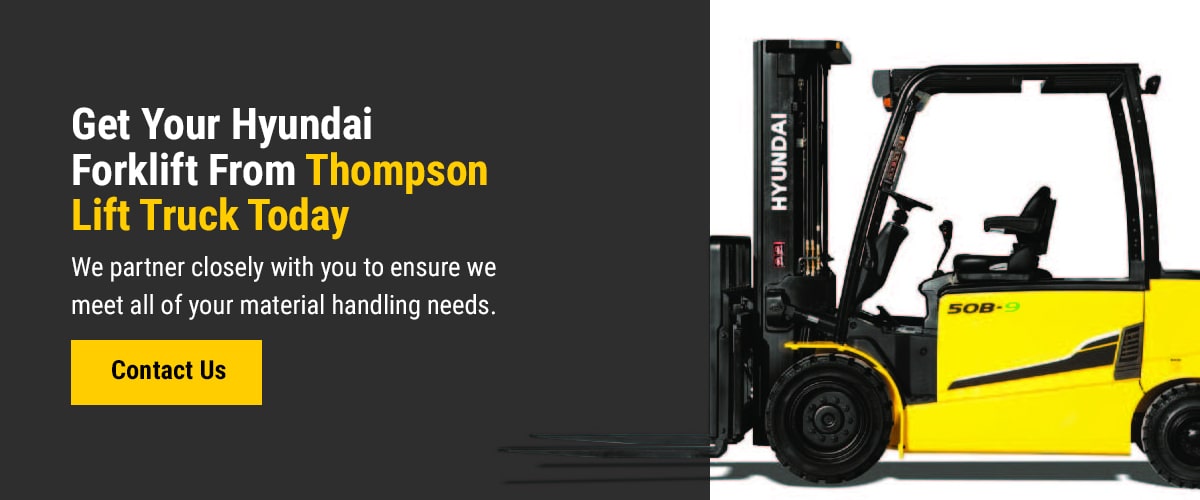
How to Check and Fill Fluid in Your Hyundai Forklift

Need Help Checking Your Hyundai Forklift Fluids?
Anyone who operates a forklift should know how to check and fill the various fluids in the machine. It’s not the most exciting task, but it can save you time, money, and a whole lot of stress down the road.
Whether you’re using a Hyundai forklift or another make, this guide will walk you through how to check and top off the fluids that matter most.
Why Fluid Checks Matter
Regularly checking your Hyundai forklift transmission fluid and hydraulic oil is key to performance and longevity. Using the correct hydraulic oil type ensures your equipment stays safe, efficient, and reliable.
Forklifts work hard, lifting, tilting, braking, turning, and every one of those functions relies on fluid. If something runs low or gets dirty, it puts stress on parts that aren’t built to take it. That’s how you end up with leaks, worn components, or breakdowns.
A quick fluid check helps prevent all of that.
What Fluids Should You Be Checking?
There are a number of important fluids to check:
- Forklift Hydraulic fluid: This one does a lot: it powers the lift and tilt, lubricates, and keeps systems cool.
- Transmission fluid: Also called transmission oil. It helps gears shift smoothly and cools the system.
- Engine oil: Cuts down on wear and keeps your engine running right.
- Brake fluid: Critical for safe stops.
- Power steering fluid: Makes the forklift easier to steer, especially when loaded.
How to Check and Fill Forklift Fluid
Before you start, make sure the forklift is off and cooled down. Park on level ground with the forks lowered. Then pop the hood and take a look.
Forklift Hydraulic Fluid
To check your forklift’s hydraulic fluid:
- Park the forklift on a flat surface.
- Find the hydraulic reservoir under the hood.
- Remove the cap and check the level using a dipstick.
- If it’s low, top it off using the hydraulic oil type recommended in your Hyundai manual.
- Seal the cap tight when you’re done.
Transmission Fluid
Here’s how to check forklift transmission oil (especially for Hyundai models):
- Start the engine and let it run until it’s warmed up.
- Keep the engine idling, shift to neutral, and apply the parking brake.
- Lift the floor plate to find the transmission dipstick.
- Check the level. Add more if it’s below the “Hot” zone.
Make sure the forklift is warm when you do this or you won’t get an accurate reading.
Engine Oil
Checking engine oil is simple:
- Turn off the forklift and find the dipstick.
- Pull it out and wipe it clean.
- Reinsert, then pull it out again to check the level.
- Add oil if it’s below the “low” mark, but don’t overfill.
Brake Fluid and Power Steering Fluid
Forklift power steering fluid and brake fluid levels are especially easy to read. They’re usually stored in plastic containers you can read without opening.
- If the brake fluid is low, top it off and double-check your braking system.
- For power steering, look for markings on the reservoir and add fluid if needed.
Talk to our experts about your forklift fluid maintenance
FAQs About Forklift Fluids
How often should I check forklift hydraulic fluid?
Check it every day before your shift. It only takes a minute and could save you from a costly repair.
What kind of hydraulic oil should I use?
Use what Hyundai recommends for your model. You’ll find it in the operator’s manual.
How do I check transmission oil?
When checking Hyundai forklift transmission fluid, always warm up the forklift, shift to neutral, and check the dipstick under the floor plate. Add oil if it’s low.
Can I mix different types of forklift fluids?
Nope. Stick to one type for each system. Mixing fluids can damage seals and throw things off.
What’s the best way to stay on top of fluid maintenance?
Use a simple daily checklist. It keeps your forklift running right and makes inspections easy.


